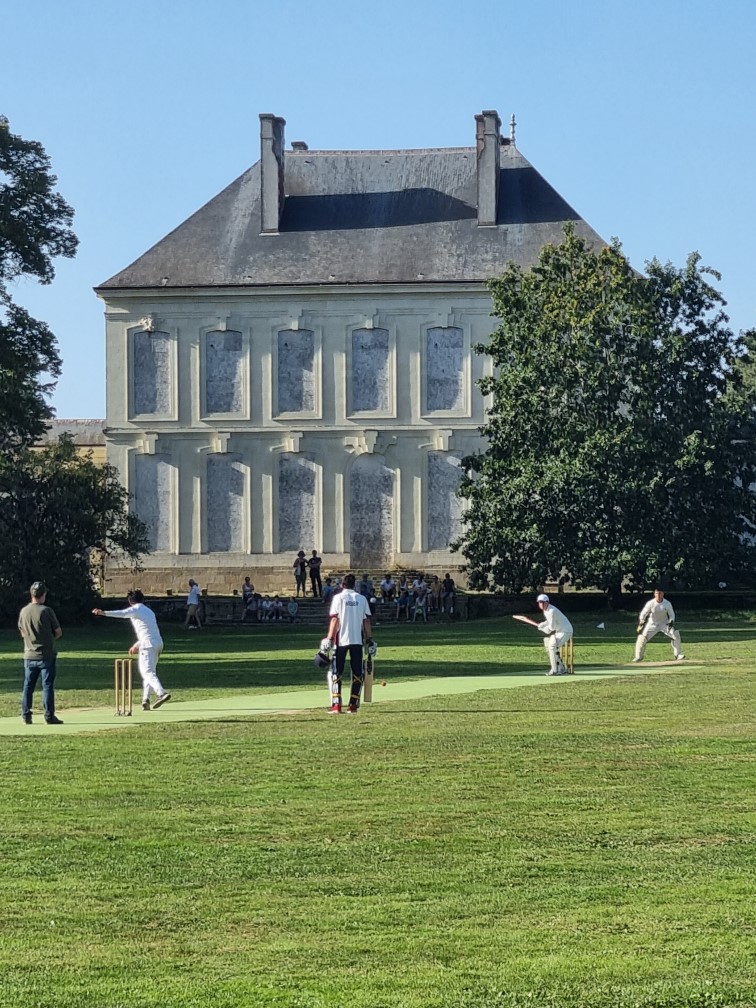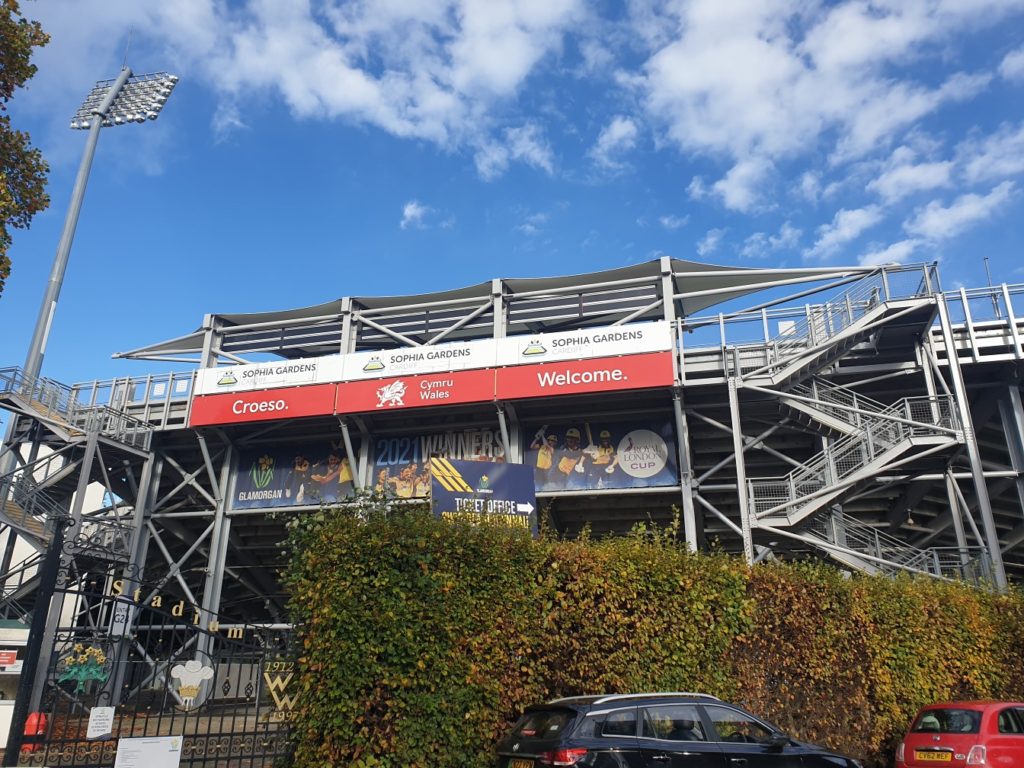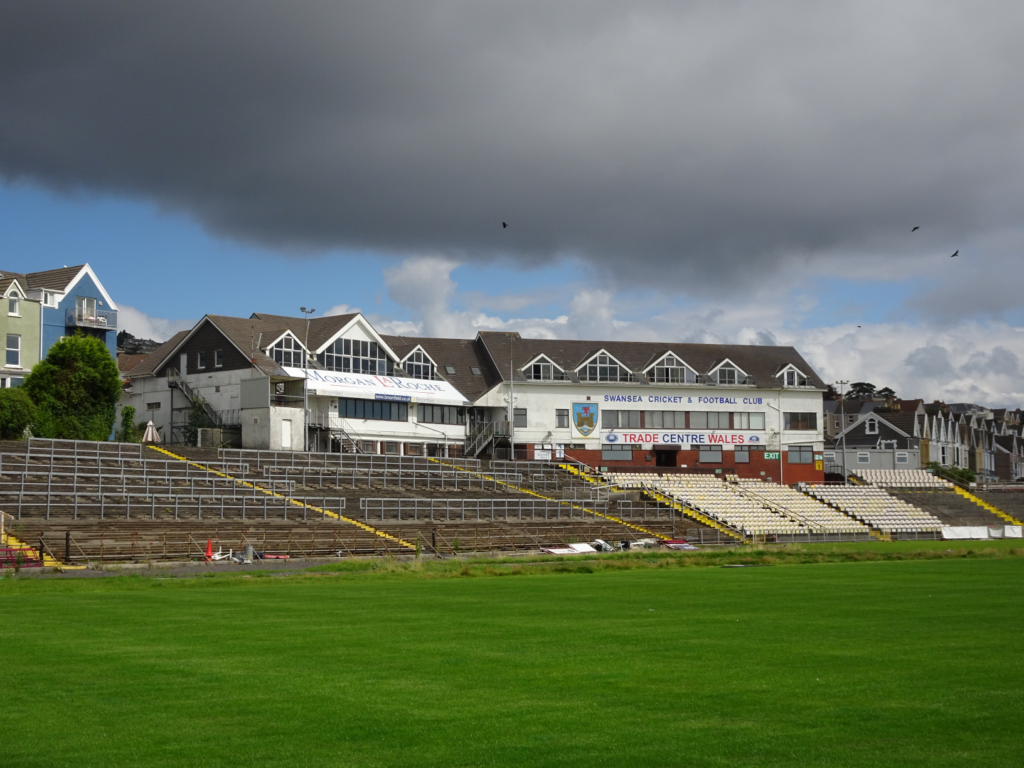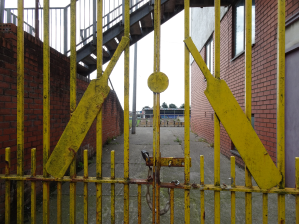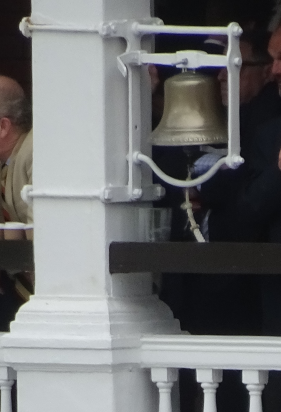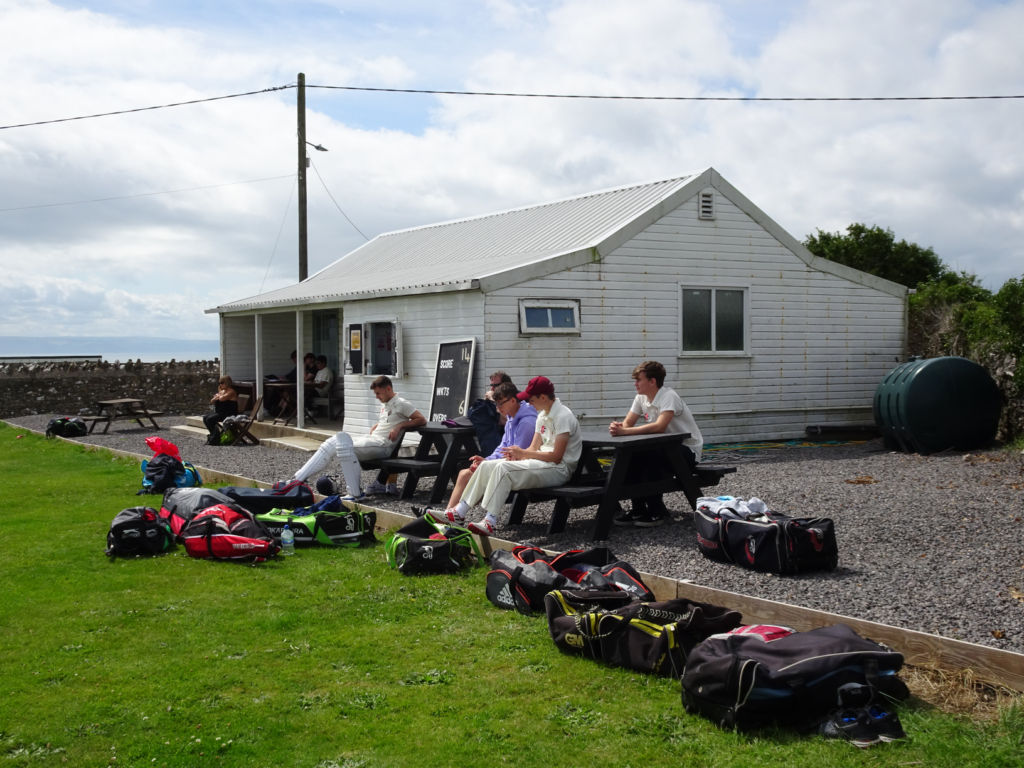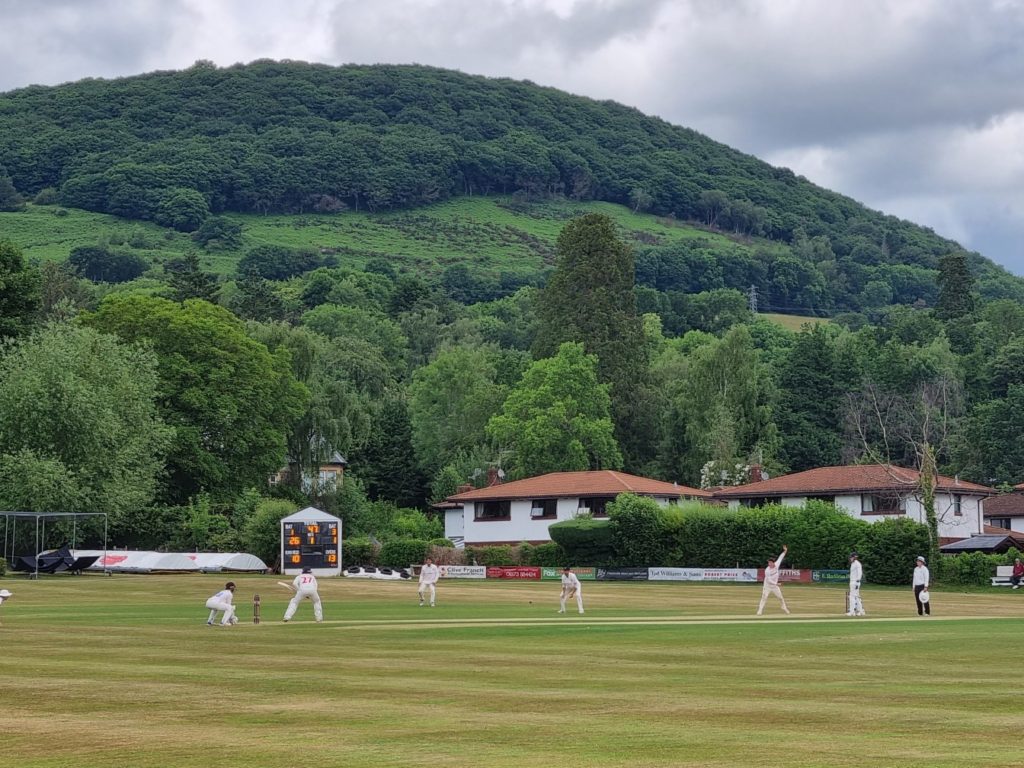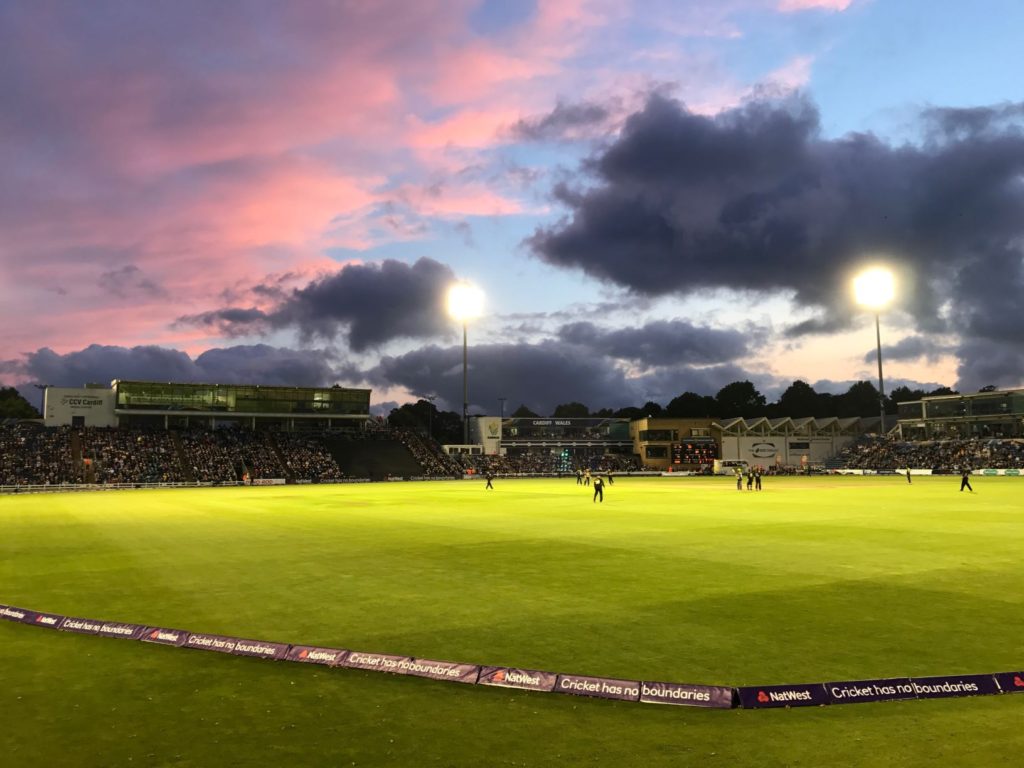
I’ve followed cricket since I was a child. My earliest recollections being confused by my dad watching a game on television that – despite it being in full flow – he said neither team could win. Years later I encountered similar confusion when American friends attempted to fathom how a five day international match could possibly end as a draw. Or – again explaining to American friends – how any match could last for some 30 hours – excluding breaks for tea!
When I was growing up, cricket on television was broadcast in black and white with very limited technology. Today’s global media events regularly feature teams wearing national colours when even the stumps and bails explode into colour when a player is out. It now seems an age ago when the wearing of anything other than the ‘traditional white’ caused heated debates amongst cricket fans.
The advert below from 1993 attempted to make an argument that wearing coloured ‘togs’ (uniforms or kits) as opposed to white flannels, was part of cricketing tradition and shouldn’t be scorned.
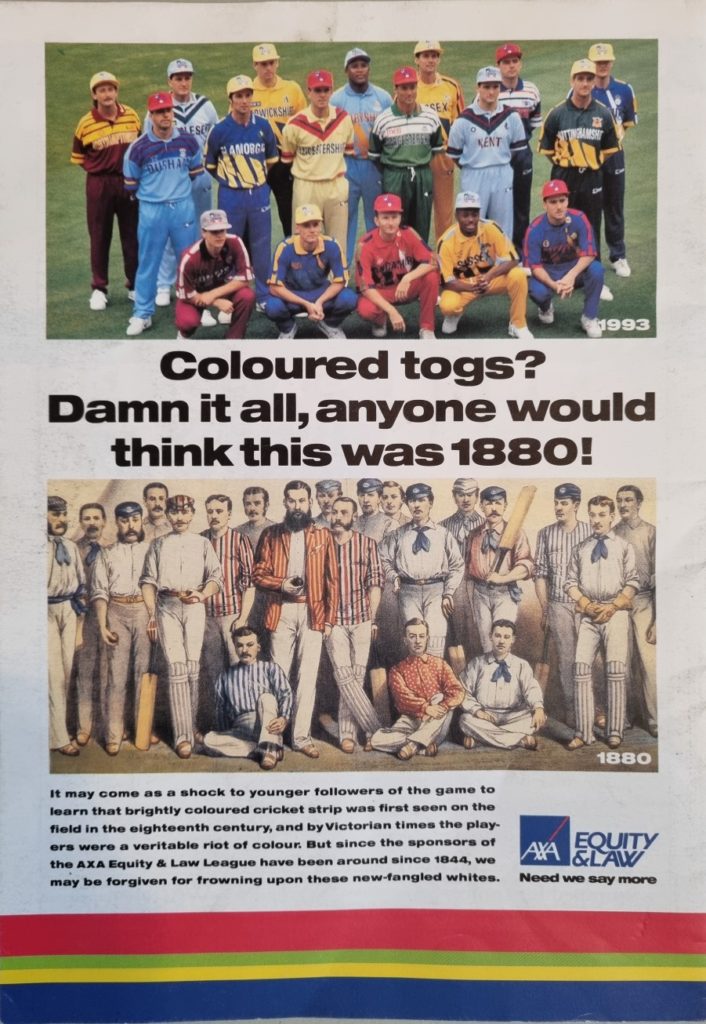
Over the years, my cricket world has regularly conjured up comparisons between the global and the local.
Examples of the Global
Whilst attending international cricket, I’ve sat with impassioned fans on The Hill at Sydney Cricket Ground and seen players such as Imran Khan represent Pakistan.
On the other side of the world, I’ve watched games at Lord’s where the ‘bubbling excitement’ – it appeared to me – has been reserved the popping of a champagne corks.
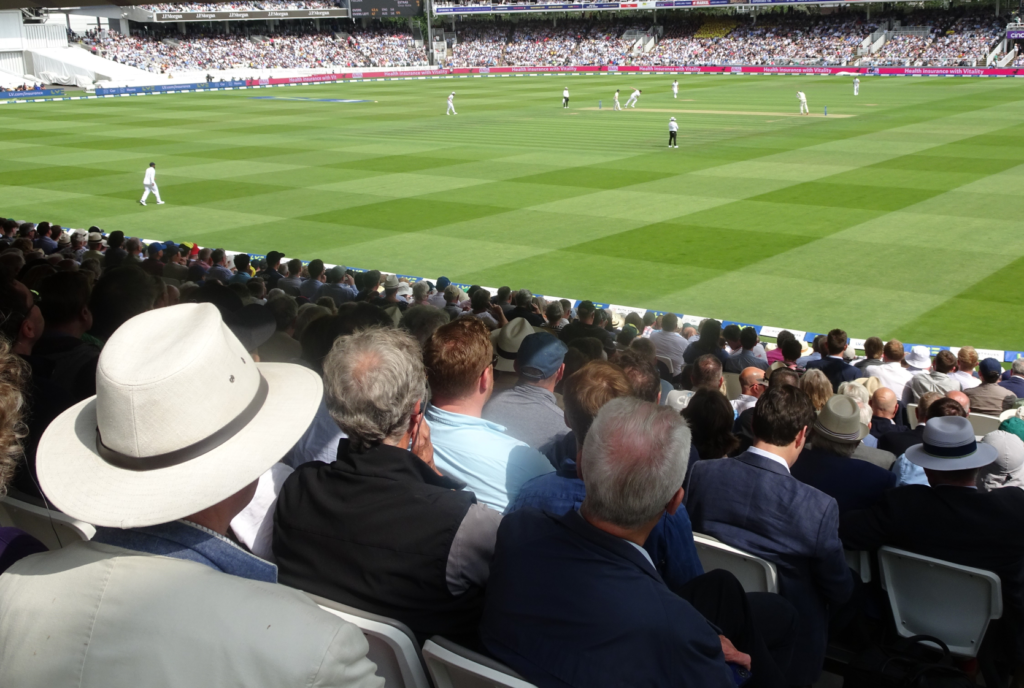
Above: Lord’s Cricket Ground, England v Australia, 2023
Despite my cricketing travels, little I’ve experienced in the international Test Match arena compares to my dad and my younger brothers going at Headingley Cricket Ground in Yorkshire, for the final day of the England v Australia Ashes match in 1981.
England were given virtually no chance of victory (odds of 500-1 were quoted) as the game entered its fifth and final day. Even so, my dad decided to drive to Leeds – some 250 miles away from our family home in Cardiff – to watch what was assumed to be a quickly forgotten test match.
Australia had been set less than 150 runs to win, and on entering the ground a steward said to my dad and my brothers ‘I’m not sure why anybody’s bothering to show up, it’ll all be over before lunch’.
Remembered now as one of the classics, England’s Ian Botham, Bob Willis and their team mates managed one of the greatest of cricketing comebacks, turning an expected England humiliation into a memorable triumph.
The victory was so seismic that my dad rang me when I was working in the USA to tell me that he and my brothers ‘were there’!
Land of the Free – at least from cricket.
If the USA population – save a few foreigners and myself – was indifferent to cricket, then the opposite was the case in Australia. Here a sleep deprived nation had witnessed a living nightmare – a national team’s capitulation which the country would want to quickly forget. England’s supporters on the other hand, have removed Australia’s option for such collective amnesia.
Examples of the Local

If the global game is a forum for examining the state of, or even the perceived virility of competing nations, then – for some – local cricket can provide the oil that is applied to both preserving cricket bats, but also to lubricate the gears of local communities.
Howzat for being local?
In his anthology ‘All in a Day’s Cricket’ Brian Levison provides an extract from the book ‘Knowing the Score’ by Keith Booth.
Booth recalls the cricket umpire Byron Denning of Glamorgan as having a complicated system of numbering each ball of the over by the names of towns running east to west through south Wales.
As if that were not sufficiently confusing, he did it in Welsh.
Booth continues, I believe the origins of this labyrinthine lie in the coincidence of Porthcawl rhyming with forth ball and the mythical superstructure has been built on either side. Thus, the first ball is Cas Newydd (Newport),the second Caerdydd (Cardiff), the third Pen-y-Bont (Bridgend), the fifth Castel [sic] Nedd (Neath), the sixth Abertawe (Swansea) and the seventh, where there is one, Llanelli.
And finally a few photos of cricketing locations – with more to follow in the coming months
- Nantes, France – Les Ormes CC v Loire CC
- Glamorgan, Cardiff, South Wales – Ashes Series 2009
- Glamorgan, Cardiff, South Wales – The stadium gates
- Glamorgan, Swansea, West Wales – The Pavilion
- Glamorgan, Swansea, West Wales – The stadium gates
- Glamorgan, Swansea, West Wales – The tea bell
- Lord’s, London – The tea bell
- Lord’s, London – A couple of confident Assie fans
- Lord’s, London – The Pavlion
- Southerndown, Vale of Glamorgan – The Pavilion
- Southerndown, Vale of Glamorgan – The Pavilion logo
- Abergavenny, Mid Wales – The Pavilion
- Abergavenny, Mid Wales – – Glamorgan 2nds v Sussex 2nds
- Glamorgan, Cardiff, Wales – The Pavilion
